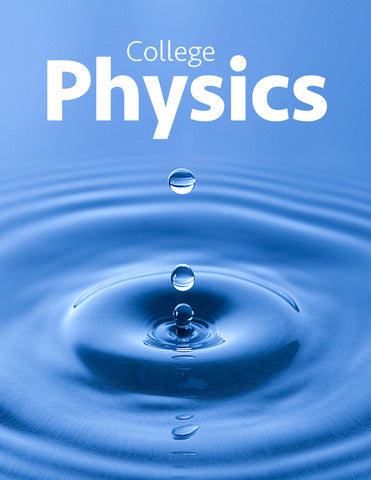
- College Physics - Purchase for Individual Use (NOT FOR A COURSE)
Important: If you are a student interested in purchasing a copy of this book for your class, you should search for your school, course name, or professor. Each instructor has a unique book created for their course, which you will not be added to if you purchase this version of the text. Digital textbooks on the Trunity eLearning platform also include interactive quizzes and other material for your class, so it is very important that you purchase the correct course.
If you are a student, please click here to find your course.
If you are an educator planning on adopting this book for your class, please click here to request an examination copy.
Overview
College Physics is an introductory, algebra-based, two-semester college physics digital textbook that combines two outstanding elements: core content from OpenStax College that has been enhanced by the Trunity Content Learning Platform. OpenStax College is an initiative of Rice University to improve student access to quality learning materials that has earned a reputation for outstanding educational content. The text is identical to the OpenStax version. Our editors have enhanced the OpenStax version by adding high resolution images, additional videos, interactive student self-assessments, links to further research, and a dynamic electronic glossary. The content is embedded in a Content Learning Platform that enables instructors to customize the content, and that provides students with personalization tools such as bookmarking, highlighting, and annotation. The result is an educational resource that combines the exceptional physics content of the OpenStax version with the Web-based features that enhance the student learning Experience.
College Physics uses the power of the Web to engage students with video, interactive self-assessment, a dynamic glossary, electronic note-taking and bookmarks, and other personal learning tools. Instructors have the ability to customize the book by adding and rearranging content such as videos, exams, labs, assignments, and news articles.
- Student Learning Outcomes
- Case Studies
- Key Concepts
- Review Questions
- Web-Based, Device Agnostic
- Highlighting and Annotations
- Online Glossary integrated into Text
Table of Contents
Chapter 1: Introduction: The Nature of Science
Chapter 2: Kinematics
Chapter 3: Two-Dimensional Kinematics
Chapter 4: Dynamics: Force and Newton's Laws of Motion
Chapter 5: Further Applications of Newton's Laws
Chapter 6: Uniform Circular Motion and Gravitation
Chapter 7: Work, Energy, and Energy Resources
Chapter 8: Linear Momentum and Collisions
Chapter 9: Statics and Torque
Chapter 10: Rotational Motion and Angular Momentum
Chapter 11: Fluid Statics
Chapter 12: Fluid Dynamics and Its Biological and Medical Applications
Chapter 13: Temperature, Kinetic Theory, and the Gas Laws
Chapter 14: Heat and Heat Transfer Methods
Chapter 15: Thermodynamics
Chapter 16: Oscillatory Motion and Waves
Chapter 17: Physics of Hearing
Chapter 18: Electric Charge and Electric Field
Chapter 19: Electric Potential and Electric Field
Chapter 20: Electric Current, Resistance, and Ohm's Law
Chapter 21: Circuits, Bioelectricity, and DC Instruments
Chapter 22: Magnetism
Chapter 23: Electromagnetic Induction, AC Circuits, and Electrical Technologies
Chapter 24: Electromagnetic Waves
Chapter 25: Geometric Optics
Chapter 26: Vision and Optical Instruments
Chapter 27: Wave Optics
Chapter 28: Special Relativity
Chapter 29: Introduction to Quantum Physics
Chapter 30: Atomic Physics
Chapter 31: Radioactivity and Nuclear Physics
Chapter 32: Medical Applications of Nuclear Physics
Chapter 33: Particle Physics
Chapter 34: Frontiers of Physics
Student Resources
Instructor Resources (Intructor access only)
Authors
Senior Contributing:
Paul Peter Urone, California State University Sacramento
Roger Hinrichs, State University of New York, College at Oswego
Contributing Authors:
Kim Dirks, University of Auckland, New Zealand
Manjula Sharma, University of Sydney, Australia
Trunity Editors
Cutler J. Cleveland and Joakim Lindblom
